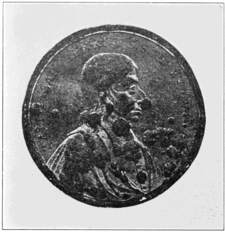Tin pest
Tin pest is an autocatalytic, allotropic transformation of the element tin, which causes deterioration of tin objects at low temperatures. Tin pest has also been called tin disease, tin blight or tin leprosy (lèpre d'étain).

It was observed in medieval Europe that the pipes of pipe organs were affected in cool climates. As soon as the tin began decomposing, the process accelerated.
With the adoption of the Restriction of Hazardous Substances Directive (RoHS) regulations in Europe, and similar regulations elsewhere, traditional lead/tin solder alloys in electronic devices have been replaced by nearly pure tin, introducing tin pest and related problems such as tin whiskers.[1][2]
Allotropic transformation
At 13.2 °C (about 56 °F) and below, pure tin transforms from the silvery, ductile metallic allotrope of β-form white tin to the brittle, nonmetallic, α-form grey tin with a diamond cubic structure. The transformation is slow to initiate due to a high activation energy but the presence of germanium (or crystal structures of similar form and size) or very low temperatures of roughly −30 °C aids the initiation. There is also a large volume increase of about 27% associated with the phase change to the nonmetallic low temperature allotrope. This frequently makes tin objects (like buttons) decompose into powder during the transformation, hence the name tin pest.[3]
The decomposition will catalyze itself, which is why the reaction speeds up once it starts; the mere presence of tin pest leads to more tin pest. Tin objects at low temperatures will simply disintegrate.
Possible historical examples
Scott expedition to Antarctica
In 1910 British polar explorer Robert Scott hoped to be the first to reach the South Pole, but was beaten by Norwegian explorer Roald Amundsen. On foot, the expedition trudged through the frozen deserts of the Antarctic, marching for caches of food and kerosene deposited on the way. In early 1912, at the first cache, there was no kerosene; the cans – soldered with tin – were empty. The cause of the empty tins could have been related to tin pest.[4] Some observers blame poor quality soldering, as tin cans over eighty years old have been discovered in Antarctic buildings with the soldering in good condition.
Napoleon's buttons
The story is often told of Napoleon's men freezing in the bitter Russian Winter, their clothes falling apart as tin pest ate the buttons. This clearly appears to be an urban legend, and there is no evidence that there existed any failing buttons at all, and thus they cannot have been a contributing factor in the failure of the invasion.[5] Uniform buttons of that era were of bone for enlisted, and brass for officers.[6] Critics of the theory point out that any tin that might have been used would have been quite impure, and thus more tolerant of low temperatures. Laboratory tests provide evidence that the time required for unalloyed tin to develop significant tin pest damage at lowered temperatures is about 18 months, which is more than twice the length of the invasion.[4] It is clear though that some of the regiments employed in the campaign had tin buttons and that the temperature reached sufficiently low values (below −40 °C or °F).[5] However, none of the many survivors' tales mention problems with buttons and it has been suggested that the legend is an amalgamation of a case of disintegrating Russian tin buttons in an army warehouse in the 1860s[7] and the utterly desperate state of Napoleon's army having turned soldiers into ragged beggars.[5][8]
Modern tin pest since adoption of RoHS
With the adoption of the Restriction of Hazardous Substances Directive (RoHS) regulations in Europe and California banning most uses of lead, and similar regulations elsewhere, the problem of tin pest has returned, since some manufacturers who previously used tin/lead alloys now use predominately tin based alloys. For example, the leads of some electrical and electronic components are plated with pure tin. In cold environments, this can change to α-modification grey tin, which is not electrically conductive, and falls off the leads. After reheating, it changes back to β-modification white tin, which is electrically conductive, and can cause electrical short circuits and failure of equipment. Such problems can be intermittent as the powdered particles of tin move around. Tin pest can be avoided by alloying with small amounts of electropositive metals or semimetals soluble in tin's solid phase, e.g. antimony or bismuth, which prevent the decomposition.
See also
- Gold-aluminium intermetallic – giving rise to Purple plague or White plague, another failure mode for electronic components due to the formation of a crystalline substance.
- Zinc pest – decay of zinc by an unrelated intercrystalline corrosion process.
- Whisker (metallurgy) – a small wire formed on metal surface. This is another problem for lead-free solder on electric devices where the tin whisker causes a short circuit.
References
- Burns, Neil Douglas (Oct 2009), "A Tin Pest Failure", Journal of Failure Analysis and Prevention, 9 (5): 461–465, doi:10.1007/s11668-009-9280-8, ISSN 1864-1245 , (Print) ISSN 1547-7029
- Tin Pest Control National Physical Laboratory, www.npl.co.uk
- Janey Levy Tin, The Rosen Publishing Group, 2009, ISBN 1-4358-5073-4, page 20
- Adams, Cecil (May 2, 2008). "Did tin disease contribute to Napoleon's defeat in Russia?". The Straight Dope. Retrieved 17 August 2010.
- Öhrström, Lars (2013). The Last Alchemist in Paris. Oxford, UK: Oxford University Press. ISBN 978-0-19-966109-1.
- Emsley, John (1 October 2011) [2001]. Nature's Building Blocks: an A-Z Guide to the Elements (New ed.). New York, United States: Oxford University Press. p. 552. ISBN 978-0-19-960563-7. Retrieved 22 February 2020.
Only officers had metal buttons, and those were made of brass.
- Fritsche, Carl (1869). "Ueber eigenthumlich modificirtes Zinn" (PDF). Berichte der Deutschen Chemischen Gesellschaft. 2: 112–113. doi:10.1002/cber.18690020156.
- Zamoyski, Adam (2004). Napoleons Fatal March on Moscow. New York, NY: Harper Perennial.
External links
| External video | |
|---|---|
Time lapse video of tin pest on an ingot |